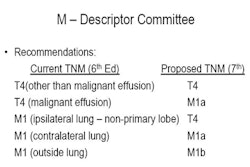Multidetector-row CT angiography (CTA) represents a big improvement over digital subtraction angiography by predicting the best treatment option for severe limb ischemia, according to researchers in Vienna.
Their retrospective study in the May 2009 issue of American Journal of Roentgenology examined 28 patients (17 men, 11 women; median age, 66 years) with stage IV peripheral arterial occlusive disease (Vol. 192:5, pp. 1416-1424).
Dr. Rüdiger Schernthaner and colleagues from the Medical University of Vienna in Austria and Stanford University in Stanford, CA, looked at treatment reports, discharge summaries, and follow-up studies to determine how many patients were treated correctly as a result of their CT diagnosis.
After CT angiography, endovascular treatment was indicated for eight patients, surgical revascularization for four patients, and a combined endovascular and surgical approach for two patients. The correct treatment decision based on the CTA diagnosis was made in all 14 cases and confirmed on the basis of successful endovascular or surgical revascularization.
Medical treatment was indicated in eight patients, and one patient underwent amputation at the level of the thigh. Five were referred for complementary digital subtraction angiography, but the second test provided no additional information.
During follow-up, three of the original 28 patients were in grave general condition and died within seven weeks of CTA. Thirteen patients needed no additional treatment during the follow-up period through January 2008. After a median treatment-free interval of 381 days, 12 patients underwent additional revascularization because of clinical disease progression.
CT angiography findings led to accurate recommendations for critical limb ischemia management and CTA is an important technique for managing stage IV peripheral arterial occlusive disease, the authors concluded.
MDCT angiography "puts patients at a low risk for developing complications and can be performed on an outpatient basis," Schernthaner said in a statement.
Related Reading
Drug-eluting stents seen promising for critical limb ischemia, March 12, 2009
MR imaging helps assess leg ischemia, March 24, 2005
Whole-body MR permits rapid evaluation of lower peripheral arterial system, July 16, 2004
Copyright © 2009 AuntMinnie.com




















